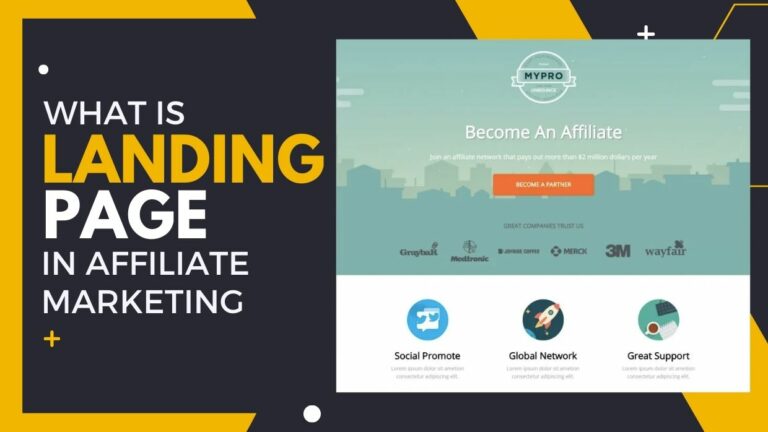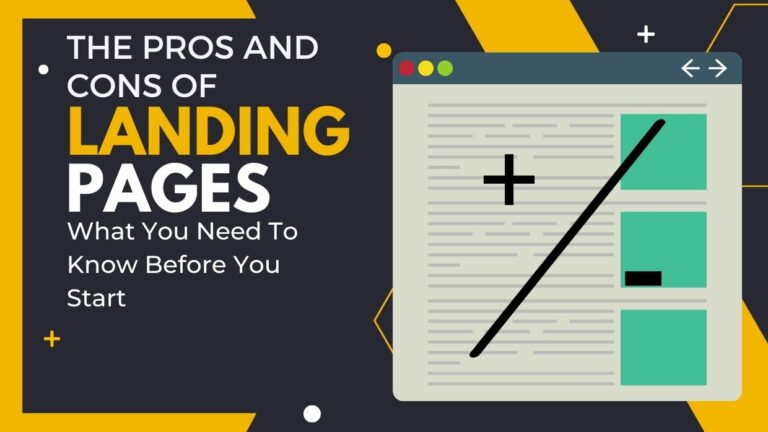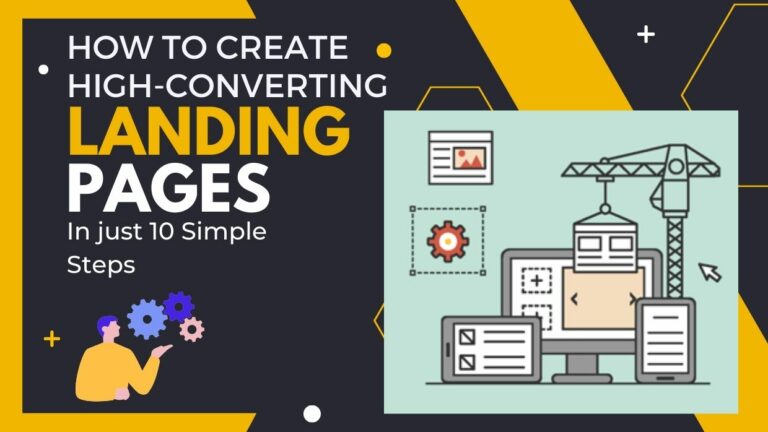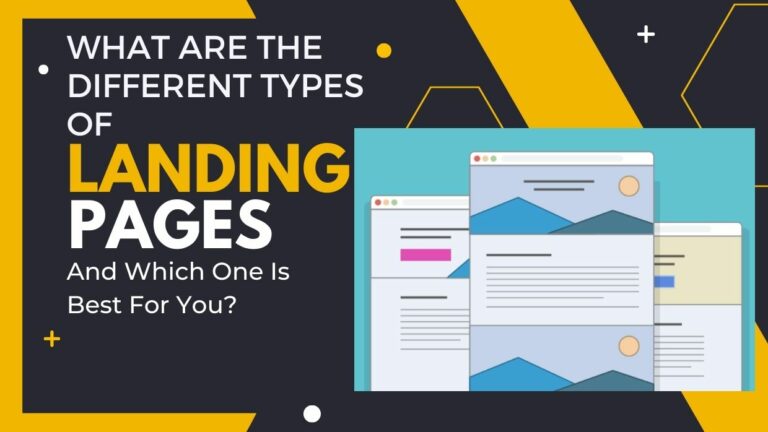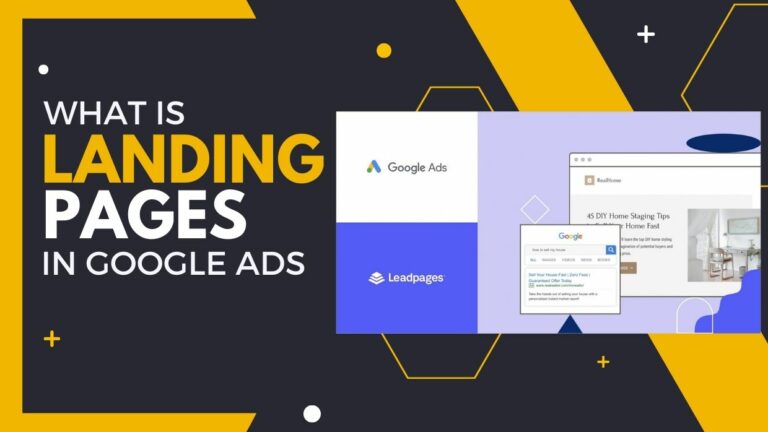What is a Landing Page And How Can It Help Grow Your Business?
In this article, discover “What is a Landing Page And How Can It Help Grow Your Business?”. Every business wants to increase its customer base, but how can you do that in a cost-effective way? Landing pages are an answer to this question and have become a popular marketing tool. From the basics of creating one to examples of successful landing pages, learn everything you need to know about this effective tool.
What is a Landing Page?
A landing page is a specific web page that is designed to convert visitors into leads or customers. A lead is a person who has shown interest in your product or service by providing their contact information, while a customer is someone who has actually purchased your product or service.
The main purpose of a landing page is to collect lead information such as name, email address, and phone number through a lead capture form. This information can then be used to follow up with the visitor and turn them into paying customers.
Landing pages are usually standalone pages that are not linked to your website’s navigation menu. This is because they are designed to be the first step in your sales funnel, and you want to make it as easy as possible for visitors to convert into leads.
If you’re running online ads, you should always send people to a landing page rather than your website’s home page. This is because people who click on your ad are typically looking for more information about your product or service, and you want to give them what they’re looking for without making them search for it.
A well-designed landing page will include:
- A headline that clearly states what you’re offering
- A subheading that elaborates on your offer
- An eye-catching image or video
- A lead capture form
- A call-to-action (CTA ) button
- A list of benefits
- A FAQ section
- Trust indicators (such as customer testimonials)
- Links to your privacy policy and terms of service.
Benefits of a Landing Page
A landing page is a single web page that appears in response to clicking on a search engine-optimized search result or an online advertisement. The landing page will usually display directed sales copy that is a logical extension of the advertisement or link. In many cases, the landing page will be designed to encourage the visitor to take action, such as subscribing to a newsletter, requesting more information from a company, or making a purchase.
There are many benefits of using landing pages as part of your online marketing strategy. First, landing pages are an excellent way to target specific audiences with laser precision. By directing ads and links to specific landing pages, you can ensure that only those people who are interested in your message are seeing it. This helps to avoid wasting advertising spend on impressions or clicks from people who are not potential customers.
Second, well-designed landing pages can be very effective at converting visitors into leads or customers. A good landing page will be relevant and targeted to the audience you are hoping to reach and will include a strong call-to-action that encourages the visitor to take the next step in your sales to funnel. Landing pages can also be used to track results from online campaigns so that you can measure your return on investment and make necessary adjustments to improve your results over time.
If you are not currently using landing pages as part of your online marketing efforts, there is no time like the present to get started. Creating high-quality landing pages can help you to maximize the effectiveness of your online campaigns and drive more leads and sales.
Also, read… Unlocking The Benefits Of E-Commerce: What You Need To Know Before Getting Started
What are the Different Types of Landing Pages?

There are the types of landing pages: lead capture, click-through, and product.
Lead capture landing pages are used to collect email addresses from visitors. The visitor is typically offered a freebie in exchange for their email address. Once the visitor enters their email address into the form, they are redirected to a “thank you” page.
Click-through landing pages are used to get visitors to click on a call-to-action (CTA), such as “Buy Now” or “Sign Up.” These types of pages are designed to persuade the visitor to take action.
Product landing pages are used to showcase a specific product or service. They usually include images, videos, and detailed descriptions of the product or service. There is also a CTA on these types of pages, but the focus is on selling the product or service.
How to Create an Effective Landing Page
If you’re running a business, chances are you’ve heard of landing pages. A landing page is a standalone web page that’s designed for one purpose: to convert visitors into leads or customers.
The best landing pages are focused on a single goal, and they make it easy for visitors to take the desired action. They’re free of distractions, and they clearly explain what the visitor should do next.
Creating an effective landing page isn’t difficult, but there are a few key elements you’ll need to include:
- A headline that clearly states what you’re offering
- Subheadings that elaborate on your offer
- A strong call-to-action (CTA) that encourages visitors to take action
- Images or videos that help explain your offer
- Testimonials from previous customers
- A form that allows visitors to sign up or learn more
- Links to other pages on your website
- Social media buttons that let visitors share the page
Once you’ve created your landing page, it’s important to test and optimize it. Track how visitors respond to different elements on the page and adjust accordingly. You should also use split testing to compare two versions of your page and see which one performs better.
By following these steps, you can create an effective landing page that will help you convert more visitors into leads or customers.
Analyzing Your Results
Once you have created your landing page and started driving traffic to it, you will need to analyze your results to see if it is effective. You can do this by looking at your conversion rate, which is the number of people who take the action you want them to (such as signing up for your email list).
If your conversion rate is low, there are a few things you can do to improve it. First, make sure that your offer is compelling and relevant to your target audience. Second, take a look at your page design and make sure that it is easy to understand and use. Lastly, make sure that you are using effective marketing techniques to drive traffic to your page.
By analyzing your results and making changes as needed, you can ensure that your landing page is an effective tool for growing your business.
Best Practices for Optimizing Your Landing Pages
To ensure that your landing pages are effective, there are a few best practices to keep in mind. First, make sure that your pages are relevant to the keywords you are targeting. This will help improve your search engine ranking and also help to convert visitors into leads. Secondly, keep your pages concise and to the point.
Visitors should be able to quickly understand what you offer and why they should use your product or service. Finally, use strong calls to action on your pages to encourage visitors to take the next step in the sales process.
Read more… Generating Leads: The 5 Best Strategies For Reaching Your Target Audience
Conclusion
Landing pages can be a powerful tool to help your business grow and reach its goals. With the right design and content, they are an effective way to capture leads, build your brand, drive sales, and increase conversions. By creating well-designed landing pages that effectively communicate with your target audience, you can create an effective marketing strategy that will help you achieve success in all of your business endeavors.


